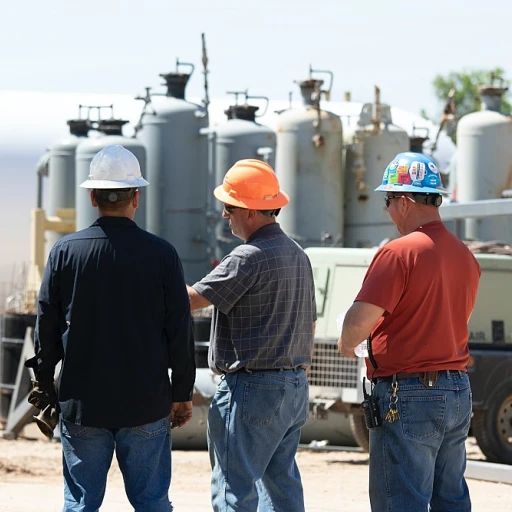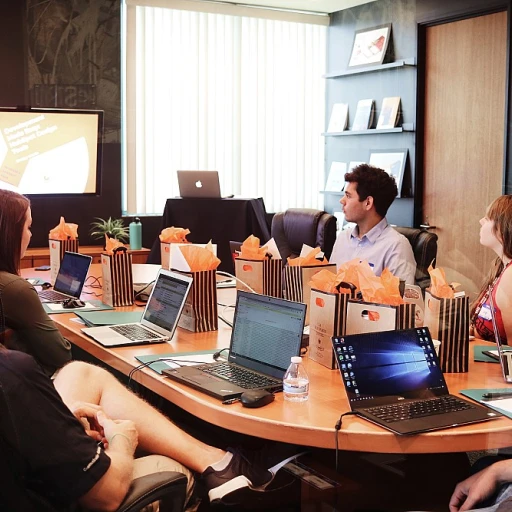Understanding the Importance of Group Activities
Recognizing the Role of Group Activities in Team Bonding
Engaging in group activities at the workplace is not just about having fun; it plays a significant role in strengthening team dynamics and boosting overall employee engagement. When team members are given the opportunity to participate in various activities, whether in small groups or a large group setting, they can develop a stronger sense of camaraderie and trust.
These activities, from problem-solving games to escape rooms, can be particularly effective in enhancing teamwork and interpersonal skills. They allow team members to work together towards a common goal, learning how to leverage each other's strengths while overcoming individual weaknesses. It's a great way to highlight the importance of collaboration and foster a culture of support and mutual respect.
Moreover, activities aimed at team building can be tailored to suit different group sizes and interests, ensuring every team member feels included. From engaging in a quick 30-minute play session during lunch breaks to dedicating a few hours to more intensive team building activities, there's an option for any team dynamic.
Understanding the nuances of how group activities influence team bonding is crucial for anyone looking to enhance team efficiency and morale. By integrating engaging conversations and icebreaker questions into these activities, leaders can create an environment where every team member feels valued and motivated to contribute. This understanding will also guide leaders in addressing potential challenges that may arise, ensuring that group activities remain an effective tool for engagement and team cohesion.
Types of Group Activities for the Workplace
Exploring Diverse Group Activities for the Workplace
When it comes to enhancing team dynamics, selecting the right group activities is crucial. These activities not only provide a break from the usual work routine but also offer a platform for team members to bond, develop skills, and improve teamwork. Here are some popular types of group activities that can be effectively integrated into the workplace:
- Team Building Games: These are designed to enhance collaboration and communication among team members. Activities like escape rooms or building games encourage problem-solving and strategic thinking, making them ideal for both small and large groups.
- Outdoor Activities: Engaging in outdoor challenges such as scavenger hunts or obstacle courses can be a great way to foster teamwork. These activities are not only fun but also promote physical health and well-being.
- Workshops and Training Sessions: These are more formal activities aimed at skill development. They can range from problem-solving workshops to leadership training, helping team members grow professionally.
- Ice Breaker Sessions: Starting meetings with thoughtful ice breaker questions can help new team members integrate more smoothly and create a relaxed atmosphere for everyone.
- Creative Arts and Crafts: Activities like painting or crafting sessions can unleash creativity and offer a refreshing change from the daily grind. These are particularly effective in promoting a positive work environment.
Choosing the right activity depends on the group size, time available, and the specific goals you wish to achieve. Whether you’re in Los Angeles or any other location, the key is to ensure that these activities are inclusive and engaging for all team members. Remember, the ultimate aim is to create an environment where people feel connected and motivated to work together.
Benefits of Group Activities on Employee Morale
The Power of Boosting Employee Spirits Through Group Activities
Engaging team activities hold a significant influence on employee morale by creating a positive work environment. When employees participate in group activities, they have the opportunity to recharge their energy levels in a fun and relaxed setting. This is where incorporating 'team building' games and activities becomes key. Activities like escape rooms or hours play of building games provide team members with a different framework to interact and collaborate, often leading to an enhanced sense of camaraderie.
Through playful interactions outside daily work tasks, employees discover new aspects of their colleagues, deepening bonds and fostering better understanding. Such interaction can aid in the development of conflict resolution and problem-solving skills, which are essential assets in maintaining a harmonious workplace. Moreover, informal settings offer a great backdrop for large groups as well as smaller teams to engage, ensuring no group size is left out.
The act of participating in group activities boosts morale as it alleviates stress. When groups spend time bonding through team building, members are more likely to feel supported and valued. As many companies in Los Angeles and other bustling cities can testify, prioritizing such activities results in higher overall job satisfaction.
For companies looking to measure the psychological and motivational impact of these activities, it might be beneficial to conduct a needs assessment. This form of evaluation can help organizations tailor future activities to better match the interests and needs of their team members, potentially leading to more substantial outcomes in engagement and morale.
Overcoming Challenges in Organizing Group Activities
Addressing Common Organizing Hurdles
Successfully organizing group activities can present several challenges, but with strategic planning and effective communication, these can be managed effectively. Here are key considerations to keep in mind:- Group Size and Complexity: Determining the ideal group size for an activity is essential to ensure engagement and participation. While small groups allow for more intimate interactions, large groups may require more structured activities like an escape room to maintain focus and organization.
- Time Constraints: Aligning schedules to find a suitable time for all team members can be difficult. It's important to allocate sufficient time, like hours play segments or minutes play sessions, depending on the activity complexity, without interfering with primary work responsibilities or underestimating needed time.
- Location and Space: Choosing an appropriate location that can accommodate the group size is crucial. Los Angeles, for example, with its vast options for venues, can offer both outdoor and indoor settings for team building exercises that cater to diverse preferences.
- Diverse Interests and Abilities: Ensure the activities are inclusive and considerate of all team members’ abilities and interests. This may mean offering a range of activities from physical games to problem-solving scenarios like escape rooms to appeal to different tastes.
- Ensuring Engagement: The core objective is to foster teamwork and enhance interpersonal skills. Thus, activities should be designed to encourage active participation and fun while also providing opportunities for learning and improvement in teamwork.
Measuring the Impact of Group Activities on Engagement
Evaluating Group Activity Success
When it comes to measuring the impact of group activities on engagement, it’s crucial to establish clear metrics to assess their success. These measurements not only help in understanding the effectiveness of the activities but also guide future improvements.
First, consider the feedback from team members. Surveys and open discussions can reveal how much people enjoyed the activity and whether they found it beneficial. This feedback can also provide insights into which activities resonate with different group sizes and which may need tweaking.
Participation rates are another vital metric. High participation levels typically indicate that the activities are meeting the team's interests and can sustain attention. Monitoring the number of people who join in on activities like escape rooms, building games, or team bonding exercises can be a primary gauge of interest.
Additionally, observe changes in team dynamics. Look for improvements in teamwork, problem-solving, and communication skills after activities. Teams that collaborate better and work more efficiently are often a sign that the group activities are having a positive influence on team building.
Quantitative performance metrics may also help. Analyze any changes in productivity or efficiency post-activity. An uptick in these areas can signal that the group activities have enhanced employee morale and engagement.
Another approach is monitoring sentiment over time. Track how employees feel about their work, considering aspects such as job satisfaction and commitment to their roles before and after participating in group activities. This can be a key indicator of lasting impact.
In conclusion, measuring the success of group activities isn't just about gathering numbers but understanding how they affect the people involved. By focusing on both qualitative and quantitative data, organizations can refine their approach to team building, ensuring that activities remain engaging and effective for all participants.
Best Practices for Successful Group Activities
Maximizing the Success of Group Activities
Organizing effective group activities requires careful planning, but ensuring their success involves adhering to best practices. In order to foster teamwork and boost engagement, it's essential to consider various factors that contribute to the efficiency of these activities.- Tailor to the Group Size: Whether you're dealing with a small group of a few team members or a large group that constitutes the entire department, choose activities suited for the group size. Larger groups may benefit from activities like an escape room to encourage collective problem-solving, while smaller teams might engage more in intimate team bonding exercises.
- Set Clear Objectives: Clearly defined goals help in choosing the right games and activities that align with team-building outcomes. Establish what the activity aims to achieve, be it enhancing problem-solving skills or encouraging creative thinking.
- Allocate Adequate Time: Time management plays a crucial role. Whether it’s an hour of structured play or several hours across a workday, ensure the timing accommodates both the activity's complexity and the team's schedule without disrupting work obligations.
- Diverse Activities: Variety is key. Mix up the activities—play fun, interactive games or divide into small groups for competitive activities. Diverse options prevent monotony and maintain engagement.
- Incorporate Fun and Play: Activities should be enjoyable. Team members are more likely to engage and openly participate if the focus is on fun alongside learning. Engage your teams in building games that foster a great atmosphere and encourage active participation.












